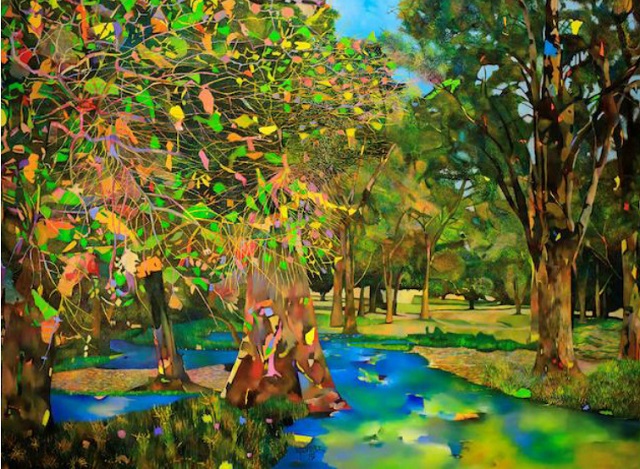
Artists have routinely used the painting of natural sceneries to represent the subject of emotions
| DOMINIC MUWANGUZI | The first time the art world encountered landscape painting was probably in a small painting called the Mona Lisa by Leonardo Da Vinci. The impressionist painting created in 150? beholds a mysterious middle aged woman wearing an elusive smile and her hands overlapping each other in a pose that is familiar to the aristocrats at the time. In the background is a serene natural landscape that disappears deep into a far off land immersed in dark and light colour as if to illustrate the notionof calm and mystery that dominatethe woman subject. Notably, the landscape is almost indistinct that it is difficult to tell if its rocky mountains, rivers or forests lurking in the background. The other paintings by the same artist that carry the subject of natural sceneries include the Last Supper where the artist made a small depiction of mountainous landscape in the distance and the Annunciation1470 that carries an elaborate study of rush vegetation, perhaps asan artistic ploy to link the serene landscape to subject matter. Leonardo Da Vinci made several studies on landscape and therefore used theexploration of the subject to represent different emotions in his art.
In as much as the artist was experimenting with new imagery in art that had not been used until then, and also the notion of creating art outside the routine studio space, he was breaking away from the norm of impressionist artists who were interested in presenting a true to detail image of the subject. Leonardo’s sceneries in his paintings where imaginative and nothing of the real life. This approach provided inspiration and courage for other artists thereafter to embrace landscape as an imagery representing diverse meanings.
 In the Uganda situation, artists since the early days of art learning have ventured into this form of art as either medium of exploring light, tone and perspective or as a metaphor of subjects like peace and tranquility. The natural vegetation that dominate Joseph Ntensibe’s art denote both an exploration of light, colour and perspective while figuratively representing the idea of peace and serenity. In the artist’s series of Botanical gardens 2010, Ntensibe paints humans or wildlife animals in the rush vegetation as an allusion to the symbiotic relationship between mankind, animals and nature. In Rejuvenation 2019, a painting that carries an intense study on a particular landscape familiar to a garden park with neatly manicured lawns and water ponds in the foreground, the artist conveys a narrative of how such space offers an opportunity for the revitalizing the human soul and mind. In his signature style, the artist creates perspective in the painting with the landscape disappearing into the distanceas a ploy to invite the viewer into the drawing.
In the Uganda situation, artists since the early days of art learning have ventured into this form of art as either medium of exploring light, tone and perspective or as a metaphor of subjects like peace and tranquility. The natural vegetation that dominate Joseph Ntensibe’s art denote both an exploration of light, colour and perspective while figuratively representing the idea of peace and serenity. In the artist’s series of Botanical gardens 2010, Ntensibe paints humans or wildlife animals in the rush vegetation as an allusion to the symbiotic relationship between mankind, animals and nature. In Rejuvenation 2019, a painting that carries an intense study on a particular landscape familiar to a garden park with neatly manicured lawns and water ponds in the foreground, the artist conveys a narrative of how such space offers an opportunity for the revitalizing the human soul and mind. In his signature style, the artist creates perspective in the painting with the landscape disappearing into the distanceas a ploy to invite the viewer into the drawing.
The allusion to Ntensibe’s paintings is a classic example of how artists in the contemporary art world have gone further to experiment with landscape art. They have used it also asa figurative representation of different subjects including contemporary themes like nature conservation and preservation. As such, while landscape painting may have started as a desire to revolutionized art with its original conservative ideology of representing the true reality of the world, it has acquired different interpretations and representations along the way to respond to the idea of creativity and innovation. This is afterall what art is partly about to challenge the status quo and create new meanings to life.
****
Images courtesy of the Web
 The Independent Uganda: You get the Truth we Pay the Price
The Independent Uganda: You get the Truth we Pay the Price




nicholashadjitheodorou@gmail.com